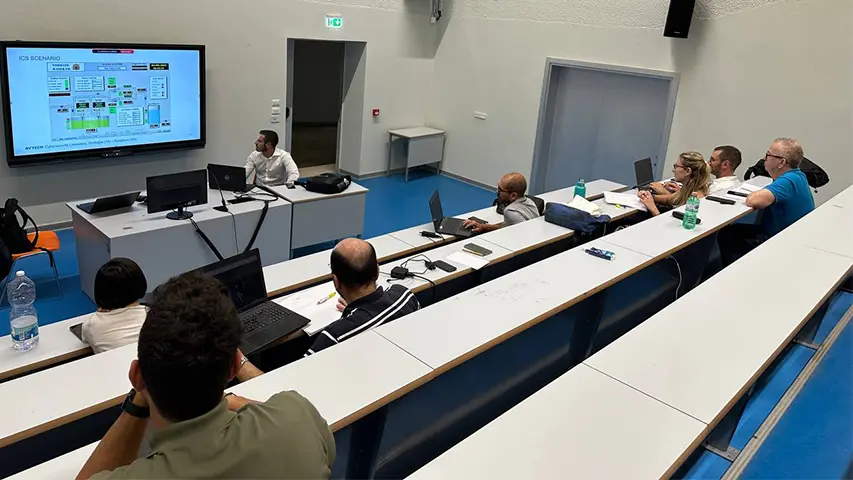Il Gruppo BV TECH
Società
Persone
Milioni € di ricavi
%
R&D
“Il Progetto di Ricerca a garanzia della Sovranità e della leadership nel campo delle Tecnologie ICT e della Cybersecurity”
Raffaele Boccardo – CEO BV TECH
Soluzioni innovative di sicurezza informatica
SOC
Monitoraggio e analisi degli eventi di Cybersecurity.
SIEM
Raccolta e analisi delle informazioni di sicurezza.
Cyber Range
Simulazione di architetture di rete e di sicurezza.
NGFW
Next Generation Firewall modulare a elevate prestazioni.
NIDPS
Sonda di rete con funzionalità Deep Packet Inspection (DPI) e Intrusion Detection/Prevention System (IDS/IPS).
Asset Inventory
Sistema per Amministrazione, gestione allarmi, distribuzione software e verifica vulnerabilità delle applicazioni di sicurezza.
Situation Room
Piattaforma per una gestione avanzata delle informazioni di sicurezza e la creazione di una “Cyber Operational Picture” avanzata.
Passione e impegno per l’innovazione
Donne e Uomini con competenze interdisciplinari al servizio della ricostruzione dell’industria ICT per affrontare le sfide della Cybersecurity.
Un contesto lavorativo inclusivo per coltivare le potenzialità delle persone e favorirne la crescita e la partecipazione diretta alla costruzione diretta di valore.
Collaborazione consolidata con le migliori università e istituti di ricerca italiani e internazionali per la selezione, l’inserimento e la valorizzazione dei migliori talenti.
Percorsi di formazione e aggiornamento professionale continuo.
Partecipazione diretta ai grandi progetti di Trasformazione Digitale in Italia e nel Mondo.
News

BV TECH allo short master “Cybersecurity for Industrial Control Systems” (CICS) di PoliBA
30/09/2025
Lo scorso 27 Settembre 2025, i colleghi del CyberLab di Grottaglie e Rutigliano hanno contribuito allo short master “Cybersecurity for Industrial Control Systems” (CICS) organizzato dal Politecnico di Bari,

BV TECH ha ottenuto la concessione del brevetto di invenzione industriale relativo a un innovativo “Metodo di riconoscimento di malware basato su analisi di API”
05/09/2025
BV TECH ha ottenuto la concessione, da parte dell’Ufficio Italiano Brevetti e Marchi del Ministero dello Sviluppo Economico, del brevetto di invenzione industriale relativo a un innovativo “Metodo di riconoscimento di malware basato su analisi di API”.

Il rapporto di ricerca “A Retrieval Augmented Generation-based technique to guide firewall configuration with Large Language Models” è stato accettato per la pubblicazione
30/07/2025
Il rapporto di ricerca è stato accettato per la pubblicazione nella prestigiosa serie “Lecture Notes in Artificial Intelligence” di Springer, nel volume che sarà disponibile da Dicembre 2025.





Progetto finanziato dal Fondo Europeo di Sviluppo Regionale Puglia POR Puglia 2014 – 2020 – Asse I – Obiettivo specifico 1a – Azione 1.1 (R&S), e con il supporto dell’Università di Bari e del Massachusetts Institute of Technology (MIT).





